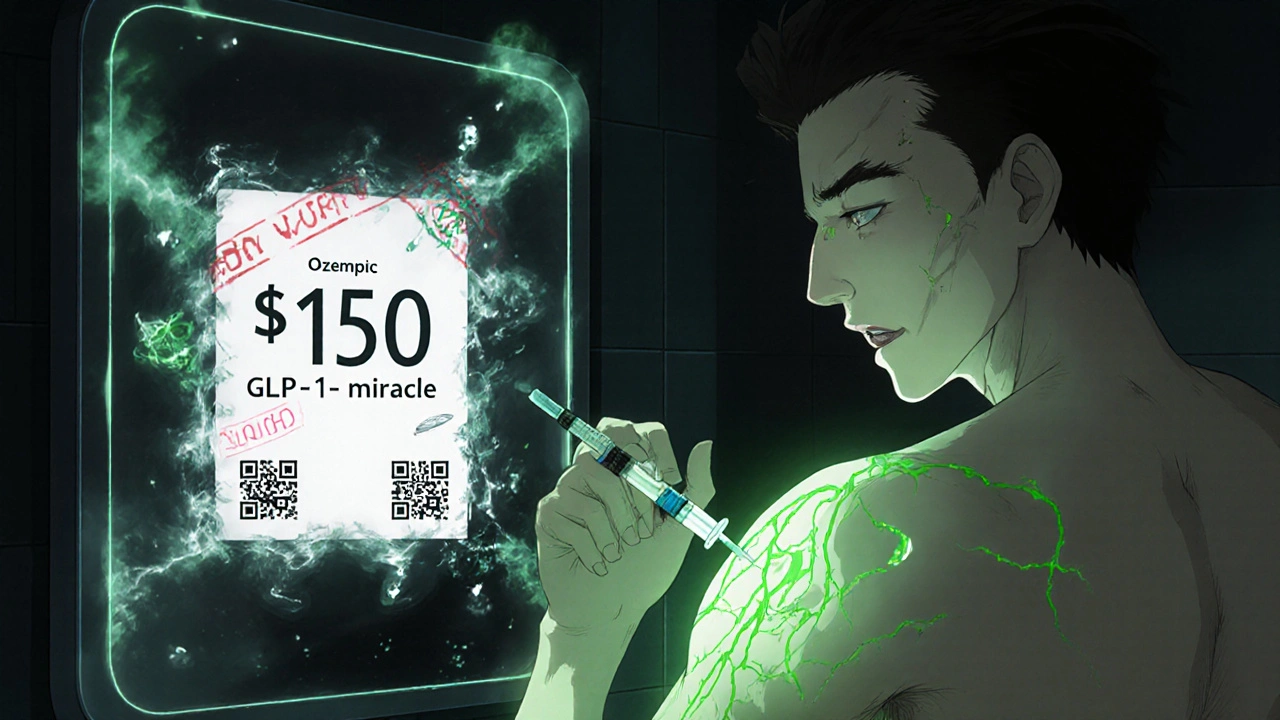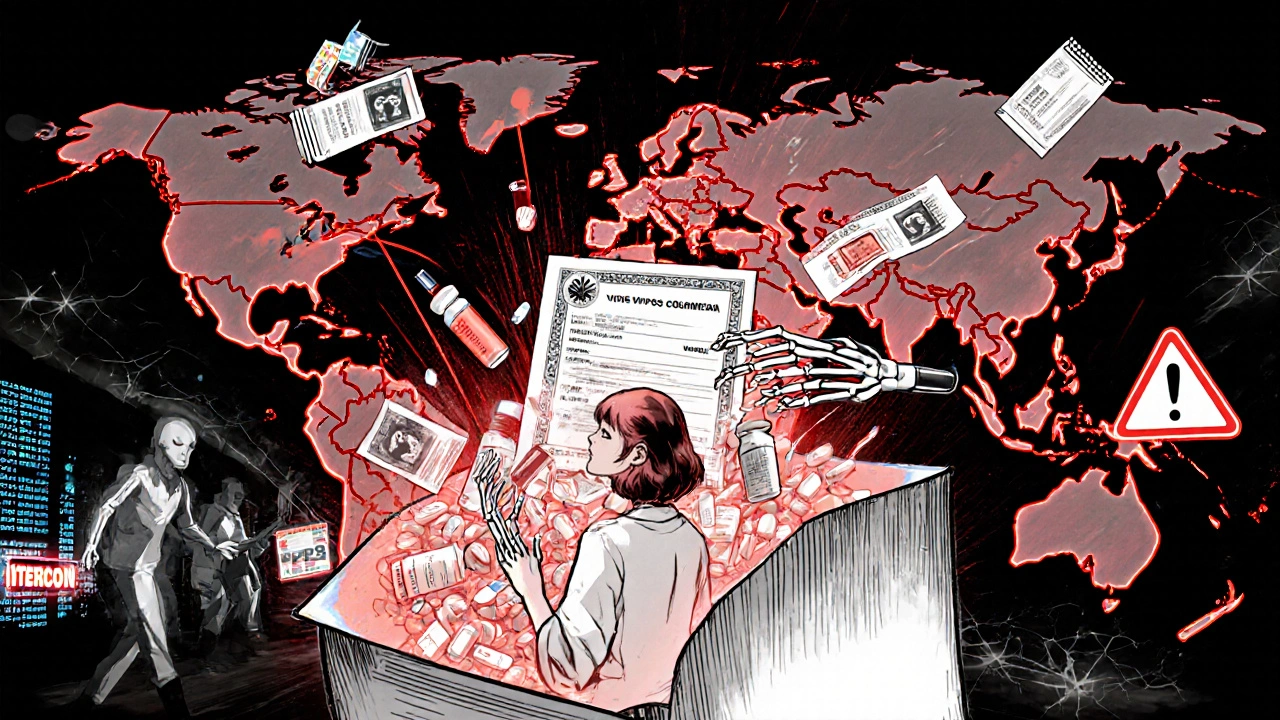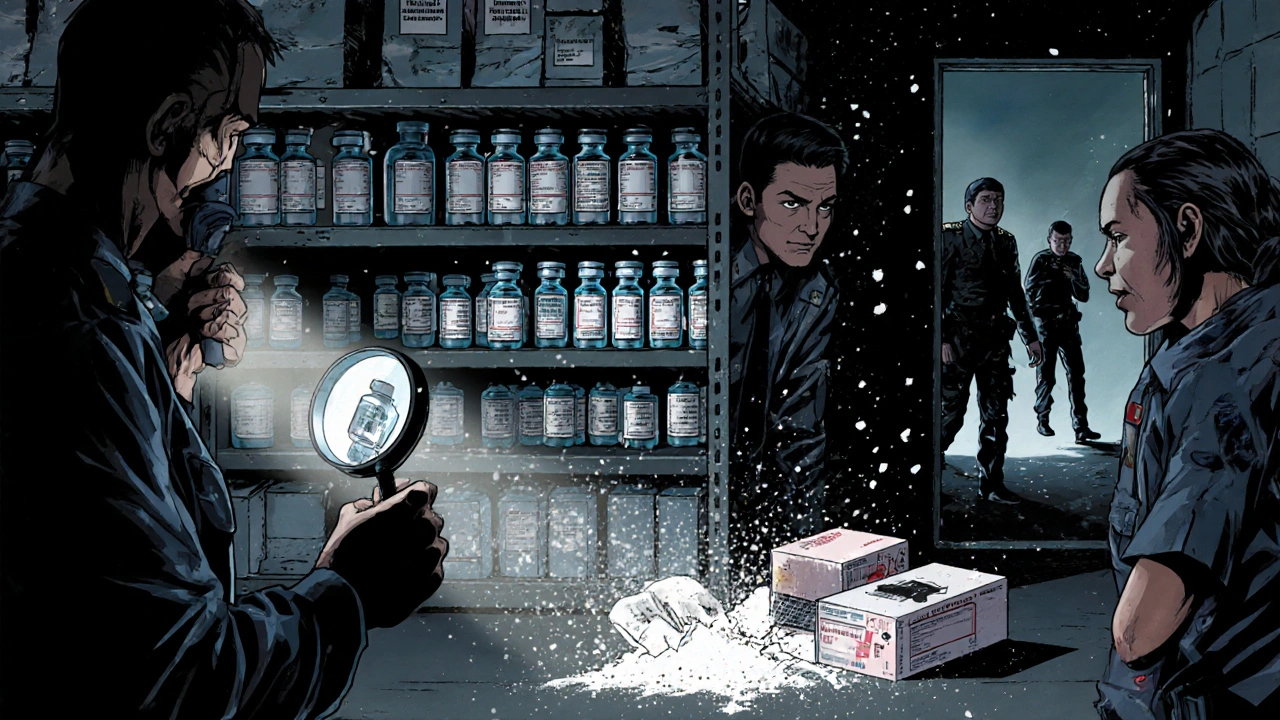Every year, millions of fake pills, injectables, and vials flood global supply chains-some labeled as life-saving treatments, others as weight-loss miracles. But these aren’t just poor imitations. They’re dangerous. In August 2025, U.S. Customs seized over 16,700 counterfeit pre-filled pens meant to look like Ozempic and other GLP-1 drugs. Inside? No active ingredients. Or worse-industrial solvents, heavy metals, and unknown chemicals. These aren’t hypothetical risks. People are getting sick. Some are dying. And law enforcement is finally catching up.
What Gets Counterfeited-and Why
Not all drugs are equally targeted. Counterfeiters go where the money is. In 2025, the most common fake medications were:- GLP-1 agonists like Ozempic, Wegovy, and Tirzepatide-drugs for weight loss and diabetes. Demand exploded, and so did fakes.
- Erectile dysfunction pills sold as “generic Viagra” or “Super Cialis” on shady websites.
- HIV medications-high-value, high-demand, and often stolen or replicated with deadly precision.
- Botox and dermal fillers-sold online as cosmetic treatments, but injected with toxic substances.
These aren’t random choices. They’re calculated. A single counterfeit Ozempic pen can sell for $300 on Etsy or Instagram. The real thing costs over $1,000. Criminals don’t need to make perfect copies-they just need to make them look close enough. Packaging? Nearly identical. Labels? Accurate font, correct colors. Even batch numbers are faked. Only lab tests reveal the truth.
Where the Fakes Come From-and How They Get Here
The U.S. isn’t the only target. But it’s one of the biggest. In 2024, the top countries of origin for counterfeit drugs seized at U.S. borders were:- India-number one for pharmaceutical counterfeits.
- China and Hong Kong-major sources of fake injectables and pills.
- Colombia and Korea-rising players in the counterfeit drug trade.
Most shipments arrive through the mail. Over 65% of counterfeit drugs are sent in small parcels-too small for thorough inspection. Criminals ship unassembled parts: empty vials from one country, labels from another, active ingredients from a third. They assemble the final product near the destination, making it harder to trace.
In 2025, Interpol’s Pangea XVI operation shut down 13,000 illegal websites and social media accounts selling fake meds. These weren’t just shady eBay stores. They were full-blown online pharmacies disguised as legitimate clinics. Some even had fake “doctor consultations” built into their checkout process.
Real Cases: When Seizures Turn Into Stories
Behind every seized shipment is a real person who almost took the drug.- In Cincinnati, CBP seized $3.5 million in fake pharmaceuticals in August 2025-mostly GLP-1 pens and HIV meds. The packaging was flawless. The contents? Lethal.
- An Iowa pharmacy was fined $25,000 for selling counterfeit Ozempic. Patients reported dizziness, nausea, and unexplained weight gain-side effects from contaminants, not the drug itself.
- In South Africa, police raided a warehouse in Gqeberha and found R2.2 million ($118,000) in fake insulin and antiretrovirals. Many of these drugs were meant for low-income patients with no access to real prescriptions.
- Nigeria’s NAFDAC shut down an illegal herbal medicine factory in Kaduna. The “treatments” for diabetes and high blood pressure contained no active ingredients. Just sugar, dye, and talc.
One Reddit user, a pharmacist named u/PharmTech2020, shared a case from August 2025: a patient developed severe cellulitis after injecting a counterfeit dermal filler bought on Instagram. The product looked real. The packaging was sealed. But under a microscope, the liquid contained glass particles and industrial-grade silicone. The patient needed emergency surgery.

The Regulatory Gap: Why Some Fakes Slip Through
Here’s the chilling truth: U.S. Customs can’t seize every fake drug.Dr. Carmen Catizone of the National Association of Boards of Pharmacy (NABP) made this clear in August 2025: “CBP cannot seize medications that violate only the Federal Food, Drug, and Cosmetic Act (FDCA)-they must be counterfeit to be seized.”
What’s the difference? A drug that’s expired, improperly labeled, or imported without a prescription? That’s a violation-but not necessarily counterfeit. It might still contain the right ingredients. A counterfeit drug? It’s a fraud. The active ingredient is missing, wrong, or toxic. Only those can be seized at the border.
This loophole means thousands of dangerous products enter the U.S. every year without being stopped. Even if they’re fake, if they’re not classified as counterfeit under U.S. law, they’re allowed to pass.
How Criminals Are Adapting
Counterfeiters aren’t standing still. They’re getting smarter.- Blockchain tracking is being used by legitimate pharma companies to verify drug authenticity. In pilot programs, it cut counterfeit incidents by 37%. So now, criminals are forging blockchain verification codes.
- AI-generated packaging is being used to replicate labels with perfect accuracy. Even QR codes scan correctly-leading users to fake websites that look real.
- Dark web marketplaces are replacing open websites. Transactions are made in cryptocurrency. Shipping is routed through multiple countries to confuse customs.
- Local assembly is now standard. Instead of shipping finished products, criminals send components to be assembled in the target country-making detection nearly impossible.
The DEA reported a 24% drop in fake pill seizures in 2024 compared to 2023. That doesn’t mean fewer fakes. It means they’re being hidden differently. More are now mixed into legitimate shipments. More are being sold as “herbal supplements” or “dietary aids.”

What’s at Stake: The Human Cost
The FDA’s MedWatch database showed a 43% jump in adverse event reports linked to counterfeit drugs in the first half of 2025. Most involved weight-loss drugs and cosmetic injectables.One patient took a fake HIV medication bought online. The pill had no antiretrovirals. Within six months, their viral load spiked. They developed drug-resistant HIV. Treatment became exponentially harder-and costlier.
Another took a counterfeit Botox injection. The product contained botulinum toxin-but at 10 times the safe dose. The patient spent weeks in the hospital with muscle paralysis. They still can’t smile fully.
These aren’t rare cases. They’re symptoms of a broken system.
What’s Being Done-and What Needs to Change
There’s progress. Interpol’s Pangea XVI operation in 2025 led to 769 arrests and the seizure of 50.4 million doses worldwide. Pfizer has trained law enforcement in 183 countries to spot fake packaging-down to the slight misalignment of a barcode or the wrong shade of blue on a label.But enforcement alone won’t fix this. Here’s what’s needed:
- Close the regulatory gap. Customs must be empowered to seize any drug that’s unsafe-even if it’s not technically “counterfeit.”
- Hold online platforms accountable. Etsy, Instagram, Facebook, and TikTok are the top channels for fake meds. They need real-time monitoring and automatic takedowns.
- Expand global cooperation. India, China, Nigeria, Colombia-all need stronger regulatory oversight. Right now, some countries lack the resources or political will.
- Public education. Most people don’t know how to spot a fake. A simple checklist-check the seal, verify the batch number online, never buy from Instagram-could save lives.
Blockchain, AI detection, and tamper-proof packaging are promising. But they’re only as good as the systems that use them. If pharmacies, customs, and patients don’t verify, the tech won’t matter.
How to Protect Yourself
If you’re buying medication online-or even in person-here’s what to do:- Only buy from licensed pharmacies. Look for the VIPPS seal (Verified Internet Pharmacy Practice Sites). If it’s not there, walk away.
- Check the packaging. Compare it to the real thing. Look for spelling errors, blurry logos, or mismatched colors.
- Verify batch numbers. Go to the manufacturer’s website and enter the batch code. If it doesn’t show up, it’s fake.
- Don’t trust “too good to be true” prices. If Ozempic costs $150 online, it’s not real. The real price is over $1,000.
- Report suspicious products. Use the FDA’s MedWatch system. One report can trigger an investigation.
Counterfeit drugs aren’t a distant problem. They’re in your mailbox, your social feed, your local pharmacy. The only defense is awareness-and action.
How common are counterfeit medications?
In 2024, law enforcement documented over 6,400 incidents of counterfeit drug seizures across 136 countries. The Pharmaceutical Security Institute estimates that nearly 1 in 10 prescription drugs sold online are fake. In some regions, the rate is as high as 50%. The U.S. seized over 50 million counterfeit doses in 2025 alone.
Can I tell if a pill is fake just by looking at it?
Sometimes-but not always. Many counterfeit pills look identical to the real thing. The best way to check is to verify the batch number on the manufacturer’s official website. If the packaging looks slightly off-wrong font, odd smell, different texture-trust your gut. Report it.
Are fake drugs only sold online?
No. While most counterfeit drugs are sold online through social media and fake pharmacies, they also enter the supply chain through stolen shipments, diverted inventory, and rogue pharmacies. Even some brick-and-mortar clinics have been caught selling fake Botox and insulin.
What happens if I take a counterfeit drug?
It depends on what’s in it. Some contain no active ingredient-so your condition gets worse. Others contain toxic chemicals like heavy metals, industrial solvents, or deadly doses of fentanyl. Adverse reactions range from nausea and dizziness to organ failure and death. The FDA reported a 43% increase in related hospitalizations in 2025.
Why are GLP-1 drugs like Ozempic so often counterfeited?
Because demand far outstrips supply. These drugs are expensive, often require long wait times, and are heavily marketed for weight loss. Criminals exploit this by selling fake versions for a fraction of the price. Online marketplaces like Etsy and Instagram are flooded with them. In 2025, 47% of counterfeit GLP-1 sales happened on Etsy alone.
Is it safe to buy medication from international pharmacies?
Only if they’re verified by the National Association of Boards of Pharmacy (NABP). Most international pharmacies are unregulated. Even if they claim to be “licensed,” they may be operating illegally. The FDA warns that 96% of online pharmacies outside the U.S. don’t comply with safety standards.

Darragh McNulty
November 20, 2025 AT 18:33Elaina Cronin
November 22, 2025 AT 00:00Daisy L
November 23, 2025 AT 08:44Paula Jane Butterfield
November 24, 2025 AT 02:27Noah Fitzsimmons
November 25, 2025 AT 09:06Mark Kahn
November 26, 2025 AT 21:46Corra Hathaway
November 27, 2025 AT 01:15David Cusack
November 27, 2025 AT 15:02Willie Doherty
November 28, 2025 AT 17:09Leo Tamisch
November 28, 2025 AT 19:39Anne Nylander
November 28, 2025 AT 23:47Kartik Singhal
November 29, 2025 AT 13:11